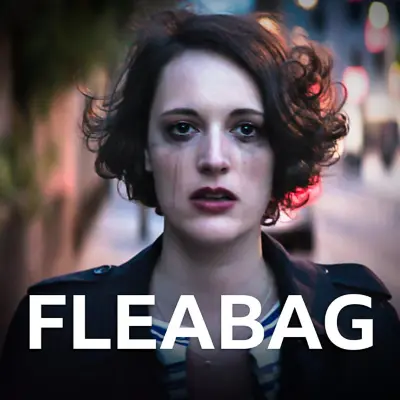Fleabag’s fourth-wall-breaking is thrilling yet crushing at the same time
-

Phoebe Waller-Bridge's character's "sly, secretive, sometimes resentful tendency to break the fourth-wall of her own story is an escape hatch," says Kathryn VanArendonk, adding that, for the audience, it's "so flattering to be her confidant, and so sad. Her closest relationship is with a presence she can neither see nor hear." VanArendonk adds: "It’s tempting to think of Fleabag’s compulsive habit of looking to the viewer as a form of intimacy. It’s the only way I can adequately describe how emotional the device makes me, how overwhelmed I feel every time Fleabag flicks her eyebrows toward me, a rapt member of her audience. Fleabag spends each interaction with other characters as opportunities to seduce us, fully aware that every scene is a performance she’s manipulating for our shared amusement. The pain, shock, and disgust she feels during an excruciating family meal in the season’s first episode are legitimate emotions, but by instantly turning to us so she can explain how she feels, Fleabag packages the experience for our consumption. She presents it to us, swiftly twisting those awkward, bruising conversations with her family into stories she’s telling for our pleasure. Packaging them, turning them into a story, is also a way to control her feelings. Fleabag gives us Fleabag as a gift, so she doesn’t have to deal with it herself."
ALSO:
- Fleabag makes the audience a fictional character: "Finally, a TV show on the pressures of being a fictional character"
- Fleabag offers poignant insight about sisterhood
- Ranking the Top 10 breaks from reality in Season 2
- Fleabag delivered a brilliant series finale
- Sian Clifford and Phoebe Waller-Bridge "fantasized" about playing sisters for years
- Why are viewers so horny for the Hot Priest?
- Phoebe Waller-Bridge on creating Fleabag: "It’s such a vulnerable leap to write something that's fiction. But also that feeling of like, how dare I? Who am I to write a story? I certainly felt like that. That little moment of permission, who gives you permission to do it, is such a thing."
TOPICS: Fleabag, Prime Video, Phoebe Waller-Bridge, Sian Clifford
More Fleabag on Primetimer:
